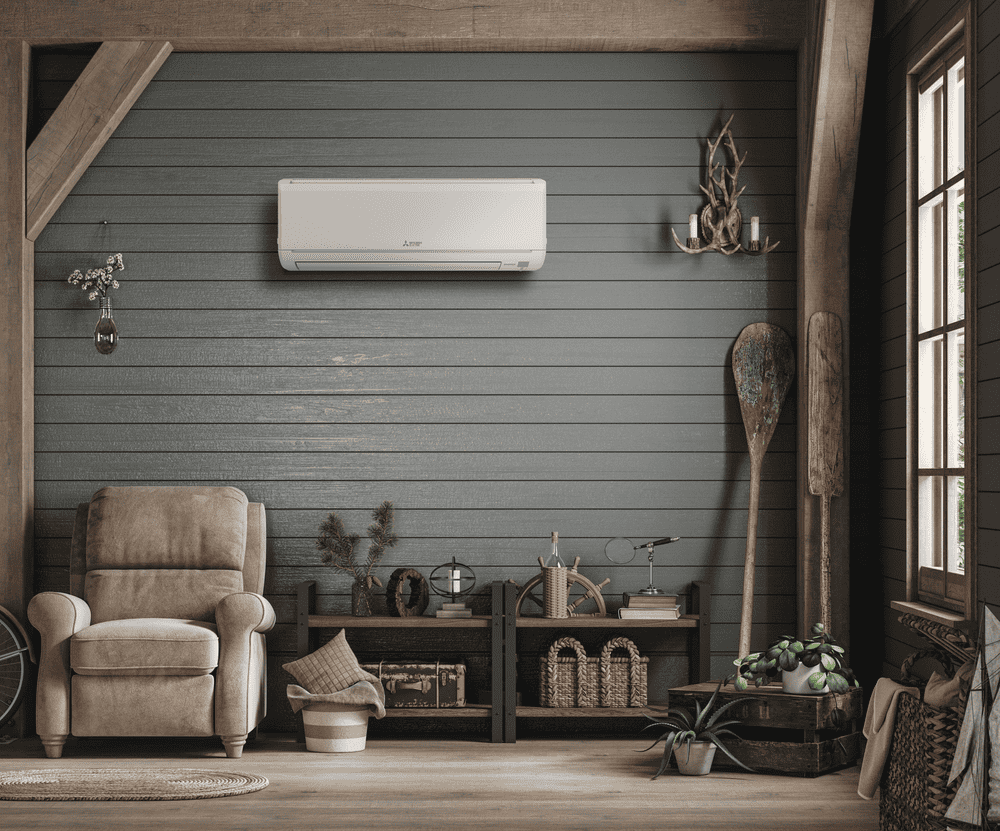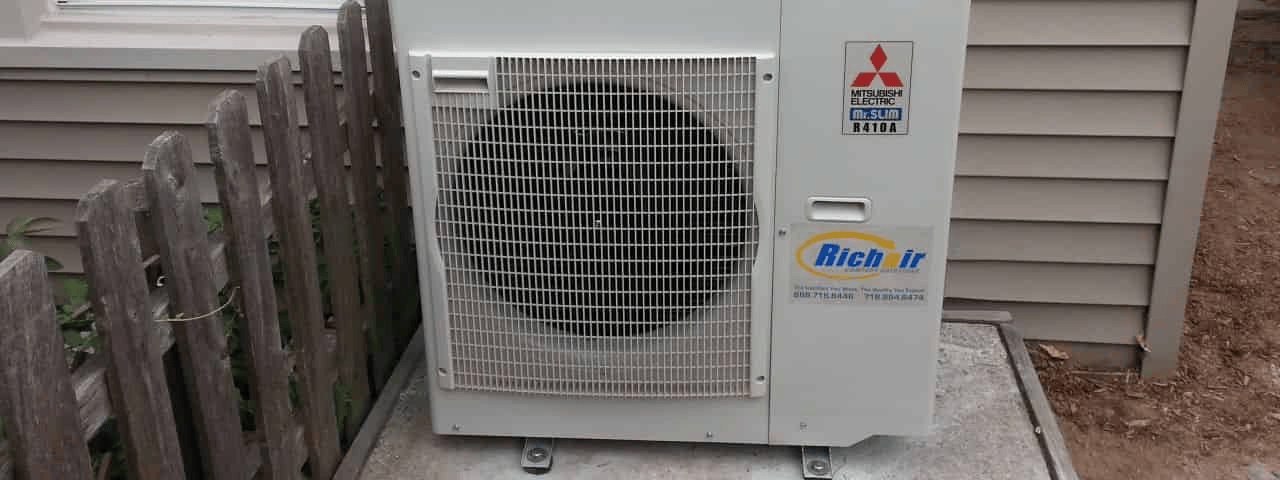Do Mini Split Air Conditioners Automatically Turn Off When Desired Temperature Is Reached?
Mini split air conditioning systems have surged in popularity among homeowners in recent years. Unlike bulky central AC units, mini splits provide quiet, energy-efficient cooling using compact indoor and outdoor components connected by conduits. But many wonder - do mini split units actually turn off when they've cooled a room down to the desired temperature? Keep reading to learn how temperature cycling works with different mini split technologies.
Table of Contents:

Do Mini Split Air Conditioners Turn Off When the Temperature Is Reached?
The indoor thermostat allows you to set your desired temperature. The system monitors the room temperature using sensors and cycles the mini split on or off as needed to maintain comfort.
Do Mini Split Air Conditioners Turn Off When the Temperature Is Reached?
Yes, mini split air conditioners are designed to turn off when the desired temperature is reached. The indoor thermostat allows you to set your target temperature, and the system uses sensors to monitor the room temperature. When the room reaches the set temperature, the mini split will either turn off completely (in on/off models) or reduce its capacity to maintain the temperature (in inverter models).
The Growing Popularity of Mini Split Cooling
Mini split systems, also known as ductless air conditioners, have become increasingly common in homes across the U.S. and Canada. According to market research firm Statista, over 2.4 million mini split units were sold in the U.S. alone in 2020. What's driving this trend?
- Precision temperature control - Mini splits allow you to cool specific rooms without running a whole home central AC system.
- Energy efficiency - Mini splits often have higher SEER ratings than central AC units, resulting in lower electricity bills.
- Quiet operation - With the compressor located outside, indoor mini split units run very quietly.
- Flexibility - Mini splits can be installed in older homes without ductwork or added to new additions and conversions.
But how exactly do mini splits maintain your desired room temperature? Do they actually turn off when they've cooled a space down to the target temp?
GET A PERSONALIZE QUOTE FOR YOUR
DUCTLESS MINI SPLIT SYSTEM TODAY!
Mitsubishi award-winning Diamond Contractor
Serving New York and New Jersey

How Mini Split Air Conditioners Work
To understand mini split temperature cycling, it helps to first look at how these systems operate:
Mini split systems have three main components:
- Indoor unit - Mounted on a wall or ceiling and contains a heat exchanger, fan, air filter, and control panel.
- Outdoor unit - Contains the compressor, condenser coil, and some control circuitry.
- Refrigerant lines - Connect the indoor and outdoor units and contain the refrigerant gas.
The indoor thermostat allows you to set your desired temperature. The system monitors the room temperature using sensors and cycles the mini split on or off as needed to maintain comfort.

On/Off vs. Inverter Technology
There are two main types of temperature cycling used in mini split air conditioners:
Traditional On/Off Mini Splits
- Cycle completely on and off when set temperature is reached
- Provide energy savings by not running continually
- Can cause slight temperature fluctuations as unit cycles
Inverter-Driven Mini Splits
- Automatically adjust operating capacity to maintain steady temperature
- Never completely shut off when set temperature is reached
- Provide improved comfort, energy efficiency, and quiet performance
Inverter mini splits use advanced electronics to continuously adjust the operation based on immediate cooling demands. Once your target temperature is achieved, an inverter mini split will keep running at a very low capacity rather than shutting off completely, helping maintain a stable, comfortable environment. In contrast, on/off mini splits will cycle completely on and off, which can lead to slight temperature fluctuations but also provides energy savings.
The Role of Temperature Differential
The temperature differential, or "swing," is the number of degrees above or below the set point at which the mini split turns on or off. A smaller differential means more frequent cycling and tighter temperature control, while a wider differential improves efficiency but may cause greater temperature swings. Many mini splits allow you to adjust the differential to find the right balance between comfort and efficiency.
Sample Temperature Differentials
Differential Setting | On Temp | Off Temp |
|---|---|---|
1°F | 72°F | 73°F |
2°F (default) | 72°F | 74°F |
3°F | 72°F | 75°F |
Thermostat Settings and Their Impact on Mini Split Operation
- Cooling Mode: In cooling mode, the mini split will cool the room until the set temperature is reached, then turn off or reduce capacity depending on the model.
- Heating Mode: In heating mode, the mini split will heat the room until the set temperature is reached, then turn off or reduce capacity.
- Automatic Mode: In automatic mode, the mini split will switch between cooling and heating as needed to maintain the set temperature.
- Fan Settings: Fan settings control the speed of the indoor unit's fan. Higher fan speeds cool the room more quickly but may be louder, while lower speeds are quieter but cool more slowly.
Timers and Sensors in Mini Splits
Mini splits use various timers and sensors to optimize their operation:
- Timers allow you to set the unit to turn on or off at specific times.
- Room temperature sensors monitor the current temperature and signal the unit to cycle on or off as needed.
- Some models also have sensors that can detect room occupancy or adjust operation based on sunlight.
GET A PERSONALIZE QUOTE FOR YOUR
DUCTLESS MINI SPLIT SYSTEM TODAY!
Mitsubishi award-winning Diamond Contractor
Serving New York and New Jersey

Real-World Examples: Mitsubishi Electric MUZ-FH18NA2 and MUZ-FH12NA2 Mini Splits
Mitsubishi Electric is a leading manufacturer of high-quality mini split systems. Their MUZ-FH18NA2 and MUZ-FH12NA2 models are excellent examples of the features discussed in this article.
The MUZ-FH18NA2 is an 18k BTU unit, while the MUZ-FH12NA2 is a 12k BTU unit. Both models utilize Mitsubishi's advanced inverter technology, known as H2i Hyper-Heating Inverter® technology. This technology allows the units to provide efficient, precise temperature control and superior heating performance, even in extremely cold temperatures. These Mitsubishi mini splits offer multiple fan speeds, timer functions, and automatic mode for convenient operation. They also feature Mitsubishi's "i-see Sensor®" technology, which uses an infrared sensor to detect temperature variations and adjust airflow accordingly, ensuring even temperature distribution throughout the room.
Additionally, Mitsubishi's mini splits are known for their quiet operation, thanks to their advanced sound-reducing technology. The indoor units are designed with a quiet mode that further reduces noise levels, making them ideal for bedrooms, offices, or any space where minimal noise is desired.
By incorporating these real-world examples of Mitsubishi mini split units, your article will provide readers with a tangible understanding of how the features and technologies discussed throughout the article are applied in actual products. It also showcases your company's expertise in installing high-quality Mitsubishi mini split systems.
Addressing Common Concerns
Some common mini split misconceptions:
Myth: Mini splits constantly turn on and off or run all the time. Reality: Quality mini splits cycle efficiently to maintain comfort while saving energy.
Myth: Mini splits are noisy when cooling. Reality: Mini splits use quiet technology, and you should only hear a soft fan sound during normal operation.
If you experience issues with unwanted cycling or noise, consult a technician to identify and resolve the problem. Proper installation and maintenance are key to mini split performance.
Conclusion: Mini Splits Offer Precise, Efficient Cooling
Mini split air conditioners are designed to turn off when the desired temperature is reached, either by cycling completely off (on/off models) or reducing capacity (inverter models). Thermostat settings, temperature differential, timers, and sensors all play a role in how mini splits operate to maintain your desired room temperature. With proper installation and maintenance, mini splits provide quiet, energy-efficient cooling with minimal disruption, making them a great solution for zoned, precision cooling.
Back Home - Richair Comfort Solution - Ductless Mini Split Systems Top Quality Installations and Professional Service.
Was This Article Helpful?
RECENT POSTS

